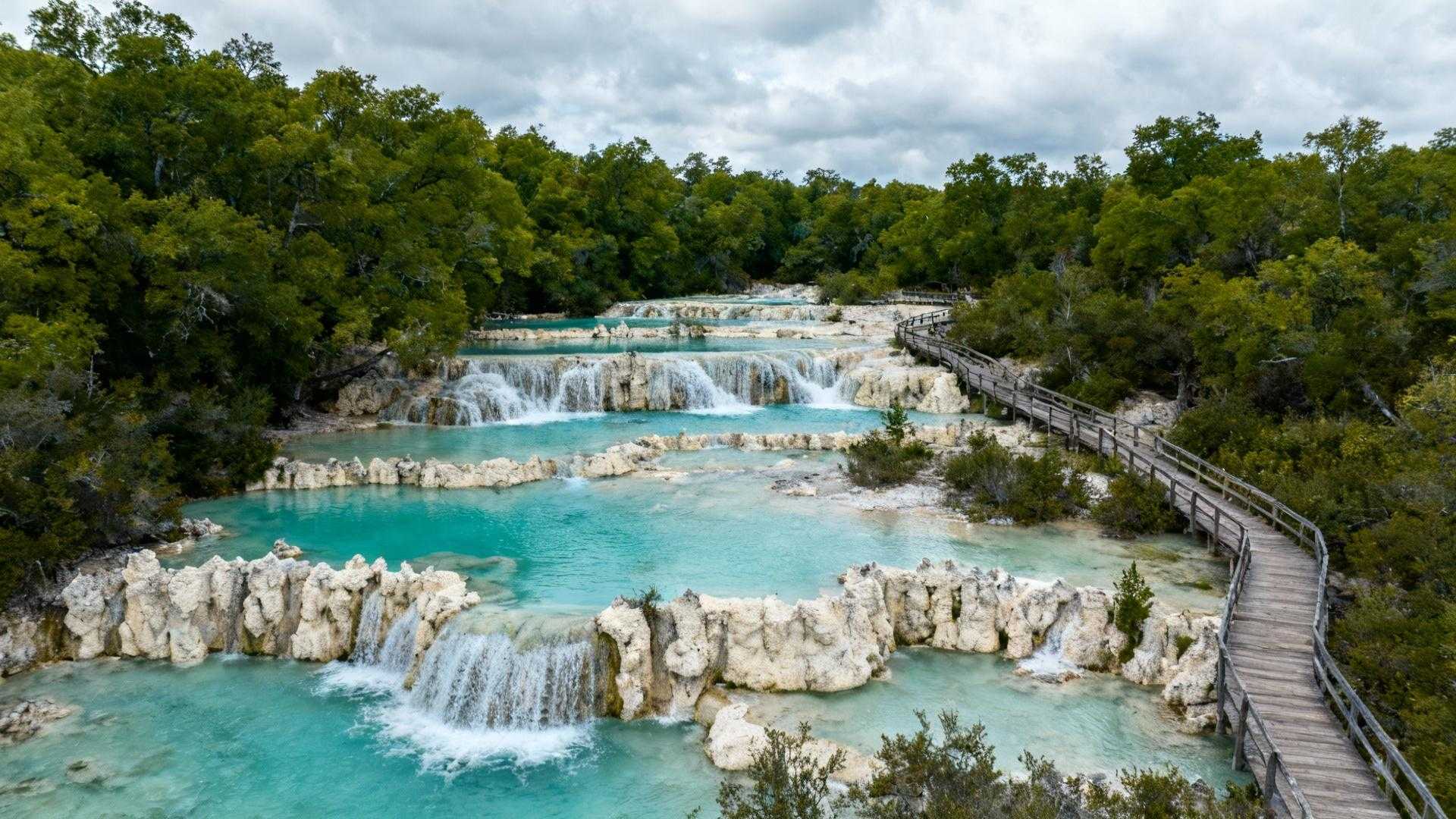I arrived at Plitvice’s Entrance 2 at 5:47 AM on an October morning, when mist still clung to the upper lakes like silk scarves. The wooden boardwalk stretched empty ahead—no selfie sticks, no tour groups, just the sound of water moving over living stone. A park ranger named Marko nodded as I passed. “Gornja jezera,” he said quietly. The upper lakes. “Most people never see them like this.”
What I discovered that morning changed how I understand waterfalls entirely. While 90% of Plitvice’s visitors cluster around the famous Veliki Slap (Great Waterfall) and the lower lake boardwalks, the upper network holds secrets that locals have protected for generations—not through gates or restrictions, but through silence.
The science behind heaven’s staircase
How tufa barriers create living waterfalls
The cascades at Plitvice aren’t carved by erosion like most waterfalls. They’re built by calcium carbonate crystallizing on moss, algae, and organic debris in the water. Scientists from the Josip Juraj Strossmayer Water Institute measure these barriers annually: the general growth rate is 13.5 mm per year, though Prošćansko jezero’s barrier grows three times faster. These aren’t ancient monuments—they’re organisms, expanding imperceptibly beneath your feet.
The color spectrum nobody explains
At dawn, the upper lakes shift through shades I’ve never seen elsewhere. Emerald where sunlight penetrates shallow tufa shelves. Azure where depth drops to 15 feet. Turquoise where underground springs inject mineral-rich water. The Croatian guide term is “Plitvička čuda”—the Plitvice miracle—because the colors transform hourly as sun angle and water temperature change. By 10 AM, when tour buses arrive, the magic fades into ordinary blue.
The hidden trail network above the crowds
Route K through mountain forest solitude
The K Program trail climbs through beech and fir forest where I walked for 47 minutes without seeing another person. This mountainous section connects the upper lakes to viewpoints overlooking the entire cascade system—16 interconnected lakes dropping across 5 miles of living travertine. Recent visitors report being “almost completely alone” here even during peak season, a stark contrast to the shoulder-to-shoulder boardwalks below.
Prošćansko jezero’s morning stillness
The highest lake in the system, Prošćansko jezero, reflects the forest canopy like polished glass before 8 AM. Its barrier grows faster than any other in the park—a phenomenon scientists attribute to optimal water chemistry and temperature. Local families from Rastovača village come here to fish in autumn, maintaining traditions their grandparents practiced before UNESCO designation in 1979. They speak of the lake with protective affection, the way you’d describe a family member who deserves better than fame.
What locals protect from Instagram crowds
The village watermill preservation effort
In Rastovača, 2 miles from the park entrance, a 1850s watermill still grinds corn during harvest season. The miller, whose grandfather operated the same wheel, explained how the Croatian War (1991-1995) accidentally preserved the wilderness—landmine clearance created buffer zones that became wildlife corridors. This history isn’t in guidebooks, but it’s why the park feels untouched in ways other European destinations don’t.
Dawn access and capacity wisdom
UNESCO limits daily visitors to 4,000-5,000 people to protect the fragile tufa barriers. But what rangers don’t advertise is that 61% enter through Entrance 1, funneling toward lower lakes. Starting at Entrance 2 before 7 AM puts you in the 39% minority, accessing upper trails when they’re essentially private. October drops capacity by 70% compared to summer’s crush—water clarity peaks at 15°C, autumn colors rival New England, and prices fall 30%.
Why Plitvice beats Krka National Park
The swimming prohibition that saved paradise
Unlike Croatia’s other waterfall systems, Plitvice banned swimming in 2006 to protect tufa formation. Krka, 43 miles south, drowns in swimsuit crowds destroying the same geological processes. The trade-off—reverent walking instead of splashing—created 18 km of wooden boardwalks that float inches above cascading water, an intimacy swimming never provides.
Regional alternatives worth exploring
Similar to Japan’s tidal transformations, Plitvice’s lakes shift personality throughout the day. For comparison, Slovenia’s Triglav National Park offers Alpine boardwalks but lacks the cascading lake system. Montenegro’s Durmitor has stunning canyons but different geology. Like Austria’s mountain-culture balance, Plitvice combines natural wonder with village heritage—watermill traditions, harvest festivals, family-run guesthouses preserving pre-tourism life.
Planning your upper lakes discovery
October timing and Zagreb access
Direct buses from Zagreb run 2 hours to the park, costing €12-15 depending on season. Book Entrance 2 tickets online for 6 AM access—gates open at dawn during shoulder season. Stay in Rastovača village for authentic experience and 15-minute walk to upper trails. Water temperature in October hovers at 15°C, creating crystal clarity for photography without summer’s algae bloom.
Sustainable tourism commitment
The park reinvests entry fees (€30 adults) into boardwalk maintenance and scientific monitoring. By choosing upper trails, you distribute impact across 296 square kilometers instead of concentrating wear on famous viewpoints. Rangers actively encourage this dispersal, though they won’t advertise it—discovering it yourself is part of the experience they want to preserve.
Questions about visiting Plitvice’s hidden network
Can I visit the upper lakes year-round?
The upper trails remain open except during extreme weather, though winter ice can close certain sections. October through May offers the most authentic experience with 70% fewer visitors than peak summer. Spring brings rushing water from snowmelt, autumn delivers foliage, winter creates frozen cathedral effects locals call “Frozen Miracle.”
How physically demanding are the upper trails?
Route K involves 656 feet elevation gain over 3 hours at moderate pace. Wooden boardwalks are well-maintained but require comfortable footwear. The upper lakes themselves offer flat, accessible paths with greater variety of smaller cascades than lower sections—less dramatic individual waterfalls but more cumulative beauty.
Do I need a guide to access hidden areas?
No guide required for marked trails, but local guides from Rastovača village offer family stories about war-era preservation and watermill traditions that deepen cultural understanding. Their presence supports village economy while providing context guidebooks omit. Book through guesthouses rather than tour operators for authentic connections.
